Invented by Jingyue Ju, Xin Chen, Xiaoxu Li, Zengmin Li, Min-Kang Hsieh, Minchen Chien, Shundi Shi, Jianyi Ren, Cheng Guo, Shiv Kumar, James Russo, Chuanjuan Tao, Steffen Jockusch, Sergey Kalachikov, Columbia University of New York
One of the key drivers of the market is the rising prevalence of genetic disorders and chronic diseases. Nucleotide derivatives are being extensively studied and utilized for the development of gene therapies, which have shown promising results in treating previously incurable diseases. These derivatives can be engineered to target specific genes or genetic mutations, enabling precise and personalized treatments. The potential of nucleotide derivatives in gene therapy has attracted significant investments from pharmaceutical companies and research institutions, further fueling market growth.
Moreover, nucleotide derivatives are also finding applications in diagnostics. They are used as probes in nucleic acid-based diagnostic tests, such as polymerase chain reaction (PCR) and next-generation sequencing (NGS), for the detection and analysis of genetic variations. These derivatives enhance the sensitivity, specificity, and accuracy of these tests, enabling early and accurate diagnosis of diseases. The growing demand for molecular diagnostics, driven by the need for personalized medicine and disease monitoring, is contributing to the expansion of the nucleotide derivatives market.
In addition to therapeutics and diagnostics, nucleotide derivatives are being utilized in various research applications. They are used as tools to study gene function, protein synthesis, and cellular processes. Nucleotide analogs, a type of derivative, are widely employed in research to investigate the mechanisms of action of drugs and to develop new drug candidates. The continuous advancements in genomics, proteomics, and drug discovery are driving the demand for nucleotide derivatives in research, further propelling market growth.
However, the market for nucleotide derivatives is not without challenges. The high cost of research and development, stringent regulatory requirements, and ethical concerns associated with gene therapy are some of the factors that may hinder market growth. Additionally, the limited availability of skilled professionals proficient in nucleotide chemistry and the complex synthesis processes involved in producing nucleotide derivatives pose challenges to market players.
Nevertheless, the market for nucleotide derivatives and methods of use thereof holds immense potential. The increasing understanding of the role of nucleotides in disease mechanisms, coupled with advancements in nucleotide chemistry and synthesis techniques, is expected to drive innovation and the development of novel derivatives. Moreover, the growing adoption of precision medicine and the rising demand for personalized therapeutics and diagnostics will continue to fuel market growth.
In conclusion, the market for nucleotide derivatives and methods of use thereof is witnessing significant growth due to the increasing demand for advanced therapeutics, diagnostics, and research tools. The potential of nucleotide derivatives in gene therapy, diagnostics, and research applications is driving market expansion. However, challenges such as high costs, regulatory requirements, and limited expertise need to be addressed to fully capitalize on the market’s potential. With ongoing advancements in nucleotide chemistry and increasing investments in research and development, the market is poised for further growth in the coming years.
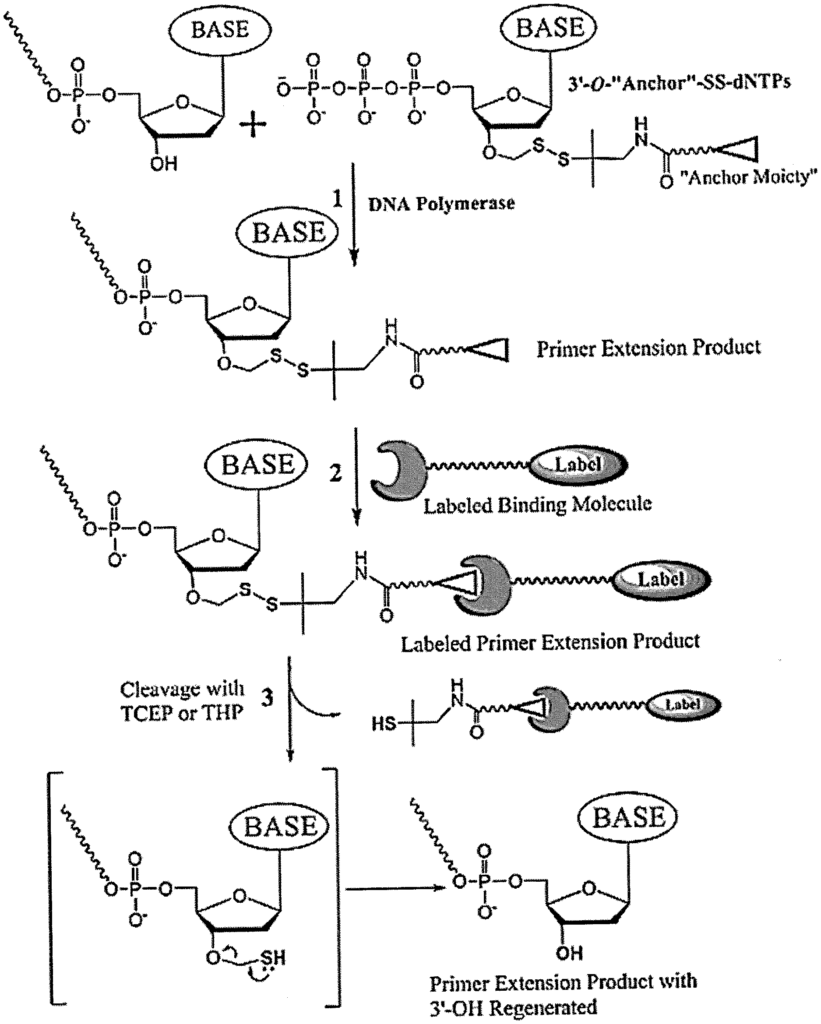
The Columbia University of New York invention works as follows
Disclosed, inter alia are compounds, compositions and methods of using them in the sequence of a nucleic acids.
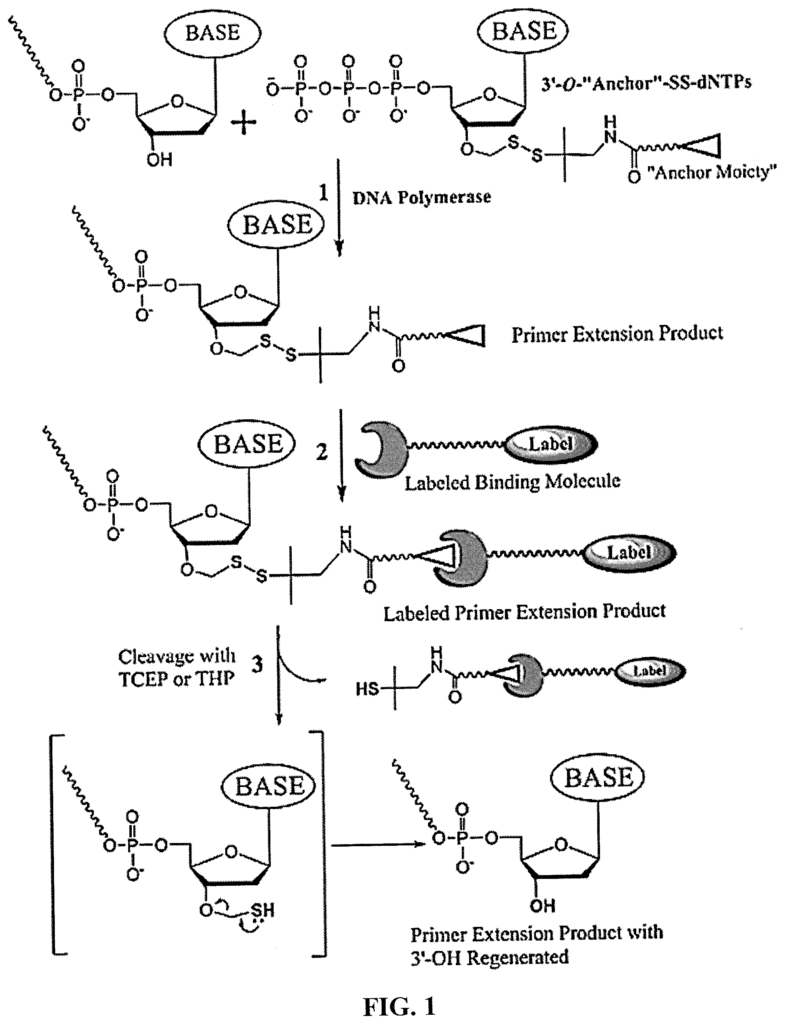
Background for Nucleotide Derivatives and Methods of Use thereof
I. Definitions
II. Compositions
III. “III.
EMBODIMENTS
3?-O Modified nucleotides & Sequencing Methods
EXAMPLES
Example 1 : Synthesis of 3?-O dye-DTM-dNTPs
DNA Polymerase Extension Using 3?-O-Rox-PEG4-DTM-dATP Reversible Terminator, Cleavage Reaction Using THP, and Characterization by MALDI-TOF Mass Spectrometry (Results are Shown in FIGS. 34A-34C.
Example 2 : Sequencing by Synthesis methods Using 3?O-Modified Analogues Nucleotides
Example A: One-Color DNA SBS (FIGS. 3A-3B)
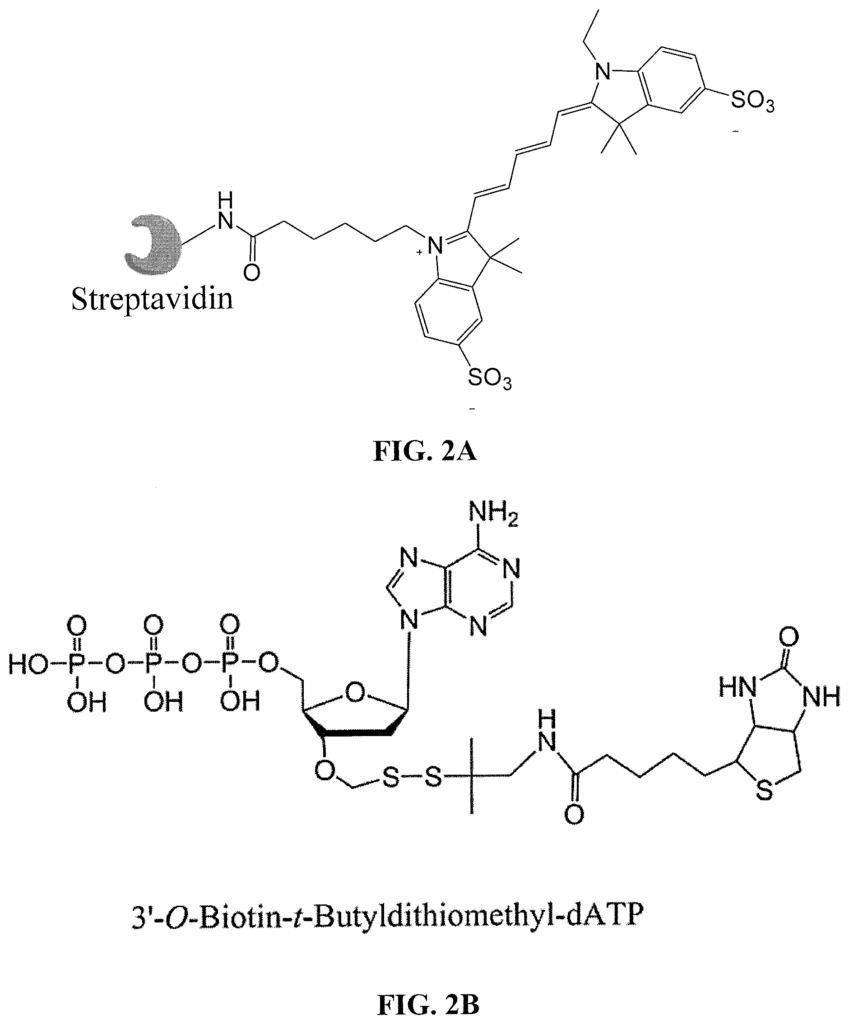
Example B. Four-Color DNA SBS (FIG. 7)
Example C. Two-Color DNA SBS (FIGS. 13A-13B)
Example D. One-Color DNA SBS (FIGS. 16A-16C)
Example E. One-Color DNA SBS (FIGS. 18A-18C)
Example F. One-Color DNA SBS (FIGS. 20A-20C
Example G One color DNA SBS (FIG. 22)
Polymerase Extension Using 3?-O-DTM-dNTPs, 3?-O-Anchor-DTM-dNTPs and 3?-O-Dye-DTM-dNTPs and Characterization by MALDI-TOF Mass Spectrometry
Synthesis and Analogues of 3?-O Modified Nucleotides
Synthesis Of Dye Labeled Bonding Molecules”.
Example 3: Single-Molecule Electronic Sequencing by Synthesis Using 3?-O-Anchor-Cleavable Linker Nucleotides/Polymer Tags and Nanopore Detection
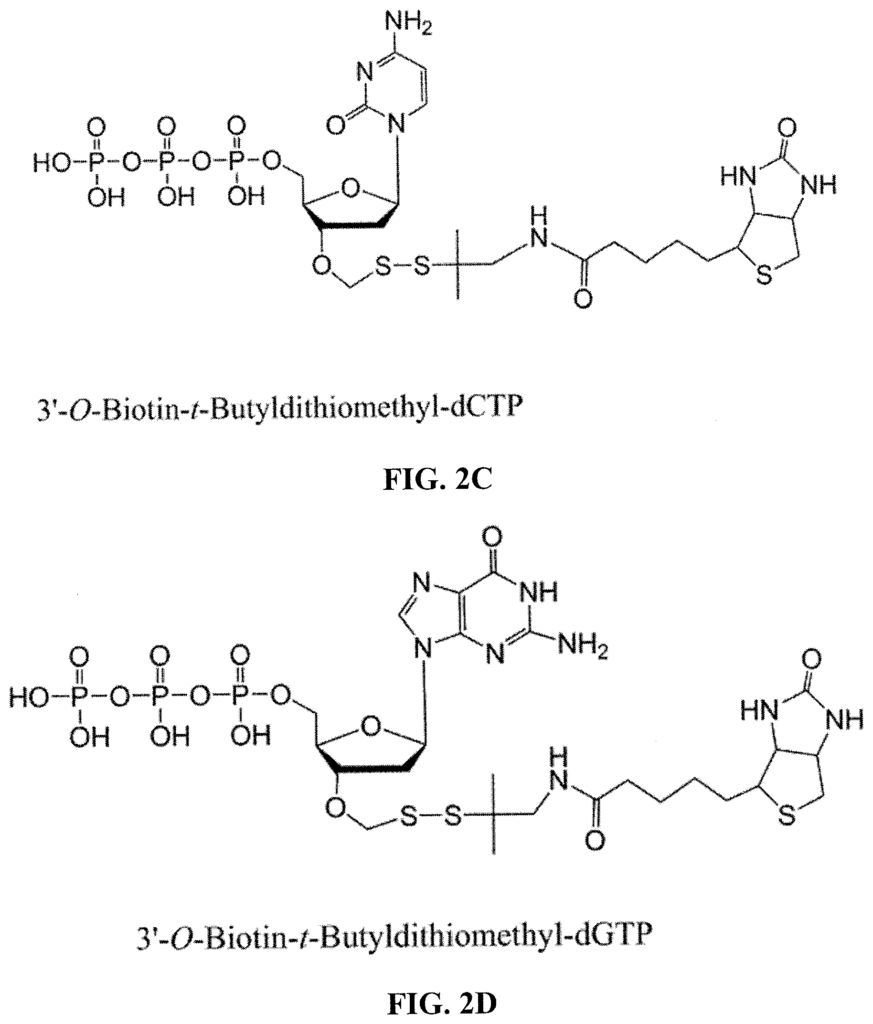
Single-Molecule SBS by a Nanopore Using 3?-O-Anchor-Cleavable Linker Nucleotides (General Approach)
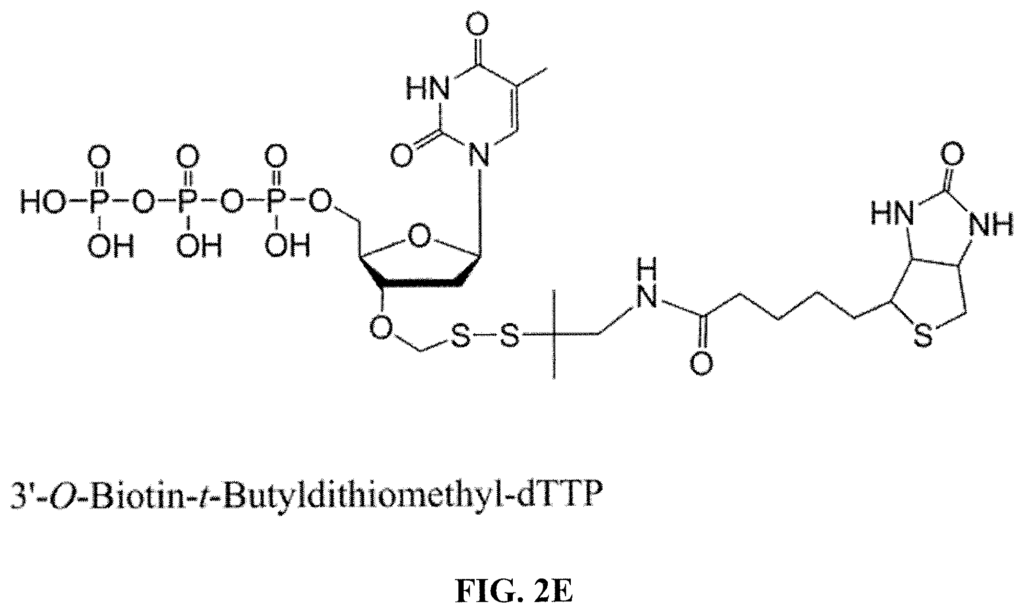
Click here to view the patent on Google Patents.
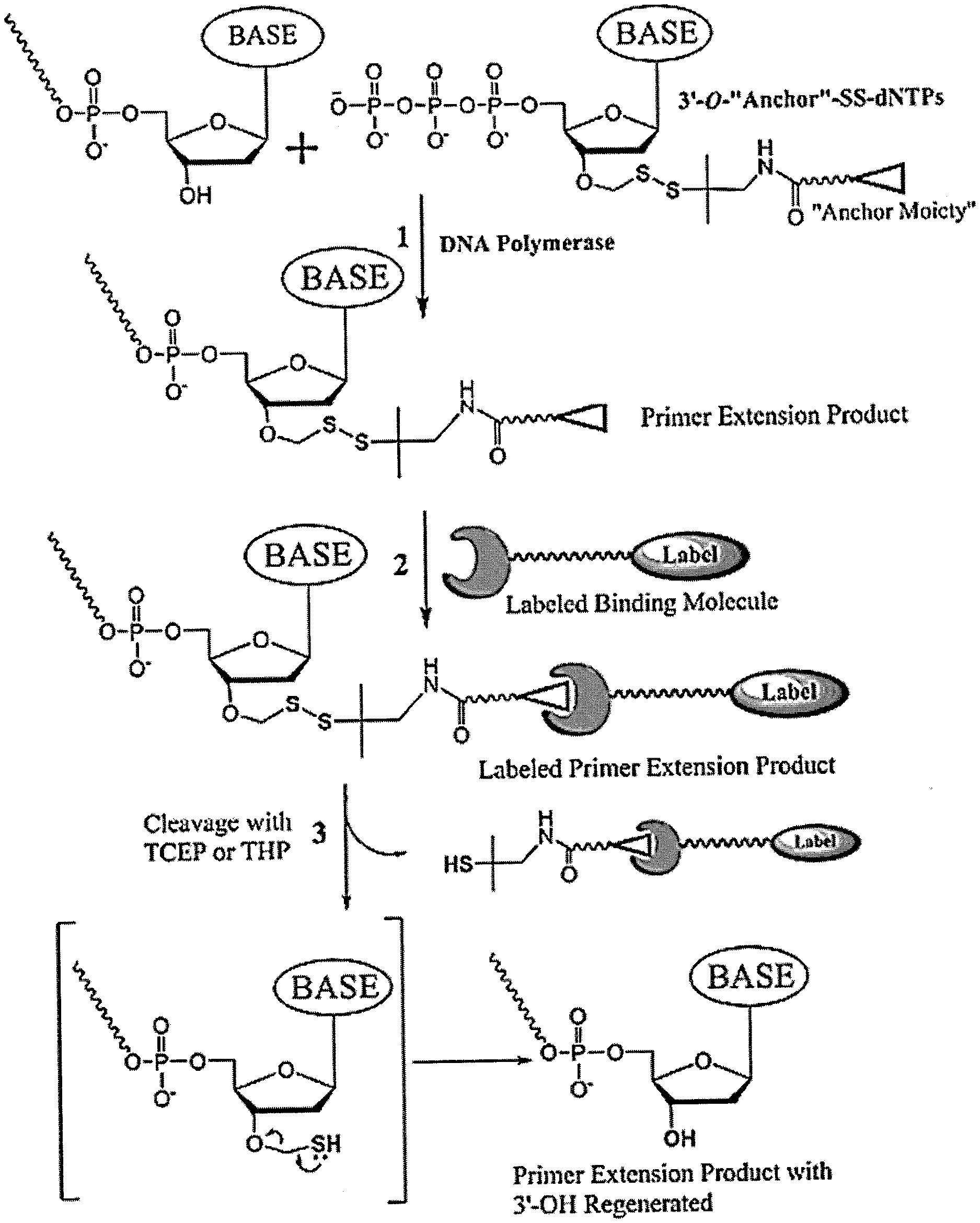
Leave a Reply